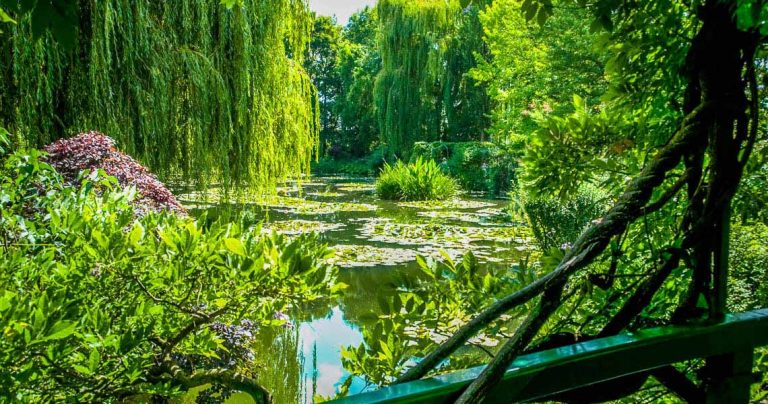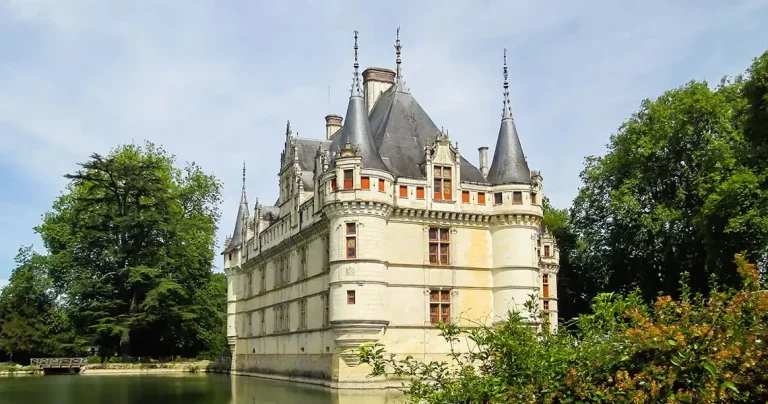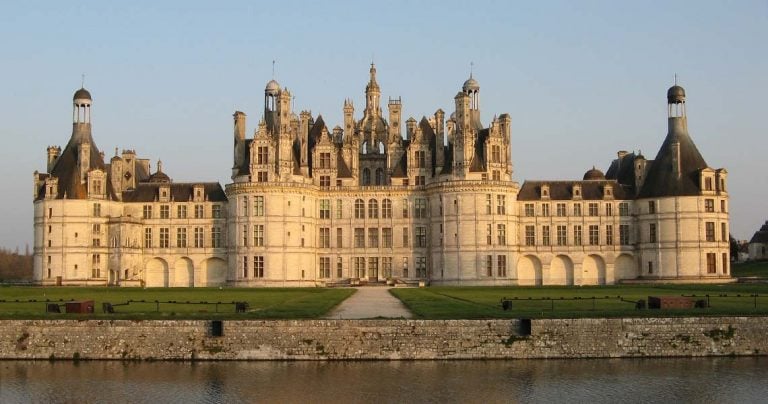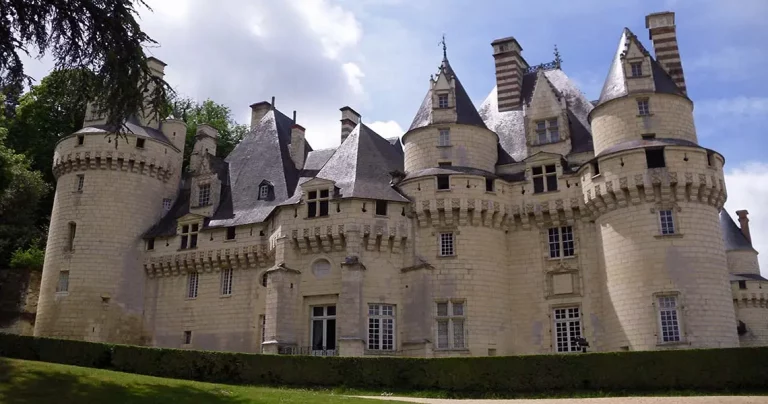Château de Vincennes – End of the Line
The Château de Vincennes is literally the end of the line; Line 1 of the Paris Métro. Take the M1 and travel 20 minutes from the middle of Paris to the Château de Vincennes and see the place where several French Kings were either born, married or died. Just make sure you don’t get on the wrong platform and end up at La Défense.
It is hard to imagine that this building was once a Royal Residence. It lacks the splendour and decoration of other well known Royal Châteaux of France. No sumptuous furnishings occupy the space, and no works of art hang on the walls. There are no expansive Le Nôtre gardens or fountains.
Apart from the buildings themselves, the Château is rather bare, more befitting a prison (which it was) or an armoury (which it was) or a place of execution (which it was) or a barracks (which it was) than a Royal residence. But for history buffs and francophiles, there is still much to see and learn.
Brief History
Château de Vincennes consists of four buildings, a keep, a chapel, and two pavilions, enclosed in a compound of nine towers. The towers were used for defensive purposes and as living quarters. Except for the main-gate tower, the tower heights were later reduced to allow for cannon deployment.


Louis VII (1120-1180) established a hunting lodge in the Bois de Vincennes in the 12th century, and Louis IX (1214-1270) made the manor his preferred residence. The remains of a fountain in the courtyard are the only visible sign of the original estate.
The death of Charles IV (1294-1328) saw the end of the Capetian line of Kings and the battle for control of the French throne, which initiated the Hundred Years War (1337–1453).
During this period, Vincennes virtually became a fortified royal residence. Philippe VI (1293-1350) commenced work on a keep or donjon in 1336, which Charles V (1338-1380) completed around 1370. The keep and the manor were then enclosed in a protective wall with nine towers.
The Holy Chapel, initiated by Charles V in 1379, and continued under Charles VI (1368-1422), was not completed until 1552 by Henry II (1519-1559).
In 1653, Cardinal Jules Mazarin (1602-61) became governor of Vincennes and employed the royal architect Louis Le Vau of Vaux le Vicomte renown, to build two symmetrical blocks on either side of the south entrance pavilion, one each for the King and Queen.
The two pavilions were finished in 1658 and dedicated in August 1660, in time for the return of the King and his new bride to Paris.
But the age of royal glory at Vincennes was short-lived. In 1682 Louis XIV (1638-1715) moved the Royal Court to his residence at Versailles, and in 1715 Louis XV (1754-1793) began his reign in Versailles. While the King occasionally went hunting at Vincennes, the Court did not return.
The Keep
A Keep or Donjon is a fortified tower built within castles during the Middle Ages and used as a refuge of last resort should the rest of the castle fall to an adversary. In the case of Vincennes, it was also a residence, a fortified royal residence.
Reaching 52 metres, the Vincennes Keep is the tallest medieval fortified structure in Europe. The walls are more than three meters thick. At the corners were four turrets, each with an external diameter of 6.6 metres. Against the north side stands a rectangular tower, 5 metres wide and 6 metres long on the outside, containing toilets on every floor.

The colossal square tower consisted of six floors with four centrally arched rooms (the four first floors) in each corner. On the fifth floor, the construction was less elaborate. The sixth floor was a blind room, only two metres high at the top.
A wall with a deep moat in front protected the keep; water initially filled the moat.
The châtelet or gateway forms the main entrance to the keep. It was the preferred working space for Charles V. In his study on the second floor, he used to receive visitors. His secretaries had offices in the two adjoining turrets. From here, the King could pass directly to his private living quarters. The footbridge or gangway was the only way to get into the keep.
In its time, the keep was a remarkable architectural feat and a visual demonstration of royal power. Built quickly and with political determination, the keep created a haven for the royal family and its invaluable treasure.
The Château de Vincennes was integrated into the City of Paris in the mid-19th century and bequeathed to the French Army.
Buildings were altered, the land converted into training grounds, and the Hôpital Militaire was built.
Vincennes served as a defence fort during the Franco-Prussian war of 1870. The ramparts were reinforced, a casemate built on top, and the openings blocked, further degrading the fortress.
Vincennes was once more severely damaged during WWII, as the Germans blew some of the ramparts and the Pavillon du Roi and burned the Pavillon de la Reine before retreating on August 24, 1944.
The French Army reinvested the old fort and the barracks after the war, and the Château has since been fully restored. Today, the Pavillon de la Reine hosts the Museum of War, and the Vincennes complex still belongs to the Army.
Sainte-Chapelle de Vincennes
The Sainte-Chapelle de Vincennes is a Gothic chapel within the broader grounds of the Château de Vincennes. Its design by Raymond du Temple and Pierre de Montereau was modelled on the Sainte-Chapelle in Paris, except it only had one floor.
On each side, oratories were reserved for the Queen and King, while to the northeast, a small building contained the sacristy and the treasury, housing the relics of the Passion of Christ. The relics, a piece of the Cross and the Crown of Thorns, were eventually moved to Nôtre-Dame. Following the fire of 2019 in Nôtre-Dame, they were moved to the Louvre.

In 1793, during the French Revolution, the interior was vandalised, the stained glass windows smashed, and the Baptistery of Saint Louis (long held in the Chapel’s treasury) moved to the Louvre Museum.

During the reign of Napoleon, the Château and its buildings underwent considerable reconstruction to serve as a military arsenal. A new wooden floor divided the Sainte-Chapelle into upper and lower levels, creating a munitions warehouse. The Pavilion of the King and the Pavilion of the Queen became barracks for the garrison.
The Chapel houses the tombs of Bernardin Gigault (who died at Vincennes in 1694) and Louis Antoine, Duke of Enghien. The latter was executed in 1804 in the moat of the Château. In 1816, his remains were exhumed and placed in the Chapel.

Some Notorious Guests
While castles typically had room to hold prisoners, the keep or donjon was also a royal residence since it was the safest place in the château. In the 16th century, however, the royal visitors began staying in the other buildings of the castle, the keep being used only as a prison. After all, the English word dungeon derives from the French donjon.
Prisoners such as the Marquis de Sade, Nicholas Fouquet, the former owner of Château Vaux le Vicomte, the forerunner of Versailles, philosopher Denis Diderot, and the French revolutionary, the Comte de Mirabeau, were all incarcerated within the Château’s sturdy walls. You can still see graffiti left by bored prisoners.
In March 1804, Napoleon Bonaparte, while still First Consul and about to declare himself Emperor Napoleon I, had the Duke of Enghien assassinated in March 1804 based on false accusations of preparing a royalist plot. The Duke’s death was paramount in determining the future ownership of Château de Chantilly.
Mata Hari was a Dutch exotic dancer and courtesan convicted of being a spy for Germany during World War I. Many still believe she was innocent and condemned simply because the French Army needed a scapegoat. She was executed by firing squad in the army barracks within the Château de Vincennes.
From the imprisonment of the Marquis de Sade to the execution of Mata Hari and hostages held by the nazis, the dramatic history of the Château continued into the 20th century. It suffered significant damage at the end of the Second World war, with renovations carried out in the following decades.
You don’t need to travel out of Paris to visit a fortified castle since the only example in the Paris region is at the end of a metro line. The metro terminates outside the main gate, and you will know you are in the right area by the number of military uniforms walking around. We needed only two hours for our visit to the Château de Vincennes, including its central keep and Royal Chapel. In addition, there are many excellent eateries opposite, on the Ave de Paris.
Practical Information
Avenue de Paris 94300 Vincennes
33 (0)1 43 28 15 48
[email protected]
10 am to 6 pm (Hi); 10 am to 5 pm (Lo); Sainte-Chapelle opens at 10:30 am, closes between 1 pm and 2 pm
M1: Château de Vincennes station; RER A: Vincennes; BUS: 46,56,86
Château de Vincennes
Société des Amis de Vincennes
Vincennes 1000 ans d’histoire







